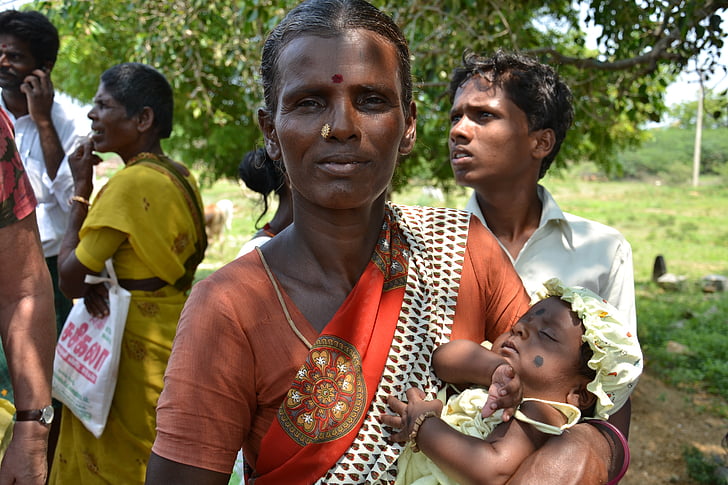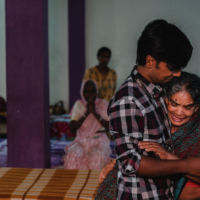GENDER inequality, a pervasive concern on a global scale, casts a profound shadow over India. While the nation has made significant strides in various domains, such as technology and economic growth, it still grapples with persistent gender disparities that deeply impact the lives of countless women and girls. This blog delves into the multifaceted aspects of gender inequality in India, shedding light on stark realities by presenting key statistics that underscore the pressing challenges.
Educational gender divide: the imbalance
As of the latest data in 2021, India grapples with a stark gender gap in literacy rates. The statistics reveal a concerning disparity, with the female literacy rate standing at a mere 65.46%, in stark contrast to the male literacy rate of 82.14%. Even more alarming is UNESCO’s report, which designates India as one of the nations hosting one of the highest rates of out-of-school girls globally. This crisis has left over 3 million girls bereft of primary education. While commendable initiatives by NGOs like Salaam Balak Trust, Isha Education, and Give (India’s largest online donation platform) are striving to uplift girls’ education, the journey toward achieving educational parity remains an extensive and challenging one.
Workforce gender inequality: unequal pay
Gender pay inequity remains an acute concern within India’s workforce. Disturbingly, women in India continue to earn, on average, 35% less than their male counterparts, highlighting a glaring financial divide. Furthermore, a stark statistic reveals that only about 23.6% of Indian women actively participate in the formal workforce. This underscores the gender underrepresentation and gender inequality in economic activities. Addressing this issue necessitates a sustained commitment from both the public and private sectors, which must provide equal opportunities for women to thrive and advance in professional spheres.
Political underrepresentation
Within the hallowed halls of India’s Parliament, women occupy a meagre 14% of the total seats, laying bare a significant gender disparity in political leadership. Of the 31 states and union territories, only 13 boast female Chief Ministers, further underscoring women’s underrepresentation in pivotal political roles.
In 1992, the government, led by P V Narasimha Rao took a monumental step by enacting the 73rd and 74th Constitutional Amendment Acts. This was in important step in addressing gender inequality. These pioneering amendments mandated the reservation of one-third of seats for women in Panchayati Raj institutions, ushering in a new era of women’s participation in local governance. Now, fast forward over three decades, we witness another historic moment with the introduction of the 128th Constitution Amendment Bill, the women’s reservation bill affectionately referred to as the Nari Shakti Vandan Adhiniyam.
This latest constitutional amendment marks another remarkable leap towards achieving gender equity in Indian politics. Both these milestones underscore the unwavering commitment of the Indian government to empower women and promote their active involvement in shaping the nation’s political landscape. Hopefully, political representation becomes bigger with the women’s reservation bill once it is implemented.
Gender-based violence: a startling reality
Gender-based violence continues to permeate the fabric of India, with shocking statistics unveiling the grim experiences that women and girls endure. The National Crime Records Bureau (NCRB) paints a disturbing picture, revealing that in 2019 alone, there were a staggering 401,413 reported crimes against women, spanning categories such as rape, domestic violence, and dowry-related deaths.
Astonishingly, this grim figure translates to one reported case of gender-based violence occurring every 1.4 minutes. Focusing on the horrifying realm of rape, this despicable crime accounted for 32,033 incidents within that year. Furthermore, the NCRB reported a distressing 7.3% increase in crimes against women from 2018 to 2019. Regrettably, the malevolent practice of child marriage continues to persist, with the National Family Health Survey (NFHS-5) revealing that 3.2% of women aged 20-24 were married before age 18. This reprehensible practice not only infringes upon the fundamental rights of young girls but also exposes them to heightened risks of experiencing domestic violence.
Moreover, the equally alarming issue of female infanticide and gender-based sex-selective abortions continues to cast a dark shadow over India, resulting in skewed sex ratios. In the context of the sex ratio at birth in India, data from the World Bank reveals a distressing figure of 1.11 males to females in 2019. These harrowing statistics underscore the gravity of gender-based violence within the nation, and it is paramount that these challenges be acknowledged and robustly addressed. Fortunately, numerous organisations and dedicated activists tirelessly toil to combat this issue, and their efforts encompass legal reforms, awareness campaigns, and community engagement, all vital components of the battle against gender violence.
Access to healthcare: a continued challenge
Access to quality healthcare remains far from equitable, with women often receiving subpar medical attention. While maternal mortality rates have declined, they remain relatively high, with approximately 174 maternal deaths per 100,000 live births.
Gender inequality in India is a multifaceted and deeply rooted issue with societal norms and prejudices. Despite commendable efforts to bridge these yawning gaps, the statistics are stark reminders that substantial work still lies ahead. The endeavour to achieve gender equality is a collective effort that must encompass policy reforms, educational initiatives, and shifts in societal attitudes. Empowering women and girls is not just a matter of human rights but an imperative catalyst for India’s socio-economic development. Confronting these challenges head-on is the sole pathway toward fostering a more equitable future for the nation and its people.
Explore Gender Equality Fundraisers
–
Give’s mission is to “make giving bigger and better.” Give is the most trusted donation platform in India for fundraisers and crowdfunding campaigns. Through our technology solutions, we enable individuals and organisations to fundraise and donate to a cause, charity or NGO with trust and convenience. Give’s community of 2.7M+ individual donors and 300+ organisations supports 3,000+ verified nonprofits with 80G deduction and serves 15M+ people across India. Find a fundraiser today!

Give exists to alleviate poverty by enabling the world to give. Established in 2000, Give, together with its partners, is the largest and most trusted giving platform in India. Give enables individuals and organizations to raise and donate funds conveniently to any cause they care about, with offerings including crowdfunding, corporate giving, cause marketing, and philanthropy consulting. Give’s community of 2.6M+ donors supports 3,000+ verified nonprofits, serving 15M+ people across the country.
Discover more from give.do
Subscribe to get the latest posts to your email.





